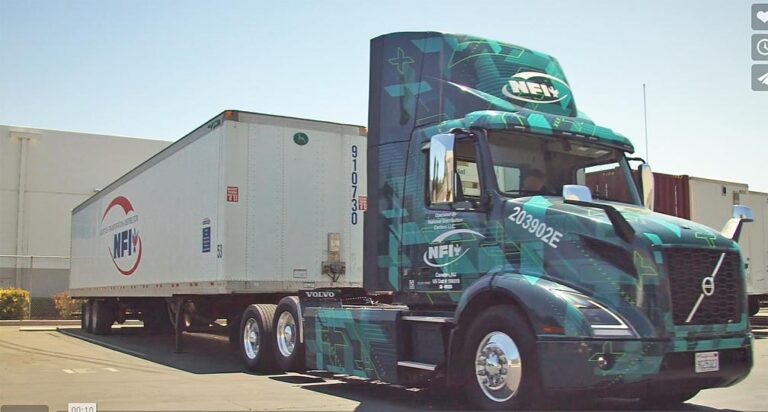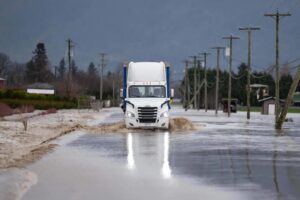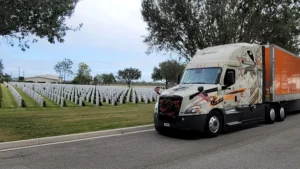FORT WAYNE, Ind. — A new report by the North American Council for Freight Efficiency (NACFE) claims that if four key market segments in trucking — vans and step vans, medium-duty box trucks, terminal tractors and heavy-duty regional haul tractors — were to go fully electric, then U.S. and Canadian fleets could eliminate about 100 million metric tons of carbon dioxide (CO2) emissions from the atmosphere.
Total U.S. CO2 emissions in 2019 were 6,558 million metric tons.
Carbon dioxide is the primary greenhouse gas emitted through human activities. In 2019, CO2 accounted for about 80 percent of all U.S. greenhouse gas emissions from human activities.
“We expect that this work will encourage fleets to explore the deployment of commercial battery electric vehicles (CBEVs) in their operations where they make sense,” said Mike Roeth, NACFE’s executive director.
“This will help manufacturers to improve their products for quicker return on investment and help others to better support the efforts of the trucking industry to progress the use of CBEVs.”
Thirteen fleet-OEM pairs participated in the study run: Anheuser-Busch with a BYD tractor; Frito-Lay with a Cummins box truck; Penske with a Freightliner eCascadia; NFI with a Kalmar Ottawa terminal tractor; DHL with a Lightning eMotors van; Day & Ross with a Lion6 truck; Ryder with a Lonestar Specialty Vehicles terminal tractor; Purolator with a Motiv-Powered step van; Ruan with an Orange EV terminal tractor; Biagi Bros. with a Peterbilt 579EV; Roush Fenway Racing with a ROUSH CleanTech truck; NFI with a Volvo VNR and Servall Electric with a Workhorse C1000.
An in-depth report, Electric Trucks Have Arrived: Documenting a Real-World Electric Trucking Demonstration, documents NACFE’s Run on Less – Electric (RoL-E) demonstration, which was conducted in September 2021.
It shares the methods used to select the participating fleets, routes and equipment, as well as what was measured and details of the Run’s findings and lessons learned.
The report documents the four market segments in which fleets are having success with CBEVs: vans and step vans, medium-duty box trucks, terminal tractors and heavy-duty regional haul tractors.
Throughout the run, NACFE tracked vehicle operations continuously via a digital tracking device, and updated metrics in real-time via a public website with the ability to view results by day or over a span of days.
“It’s not the technology of the future. It is technology for now. Manufacturers are going into production starting now and over the next several years,” said Tim Farney, vice president of global sales for Dana Inc.’s Commercial Vehicle Division.
The report includes information on state of charge, daily range, speed profiles, regenerative braking recovery, number of deliveries, charging rate, energy consumption, trucking activity, energy-in per day, energy-out per day and weather conditions.
It also documents driver reaction, regional factors that impact CBEVs, maintenance and the role of utilities in the successful deployment of CBEVs.
NACFE also enumerated 23 lessons learned in five categories — charging, measuring performance, standards, operations and utilities. See a full list of lessons learned here.
The combustion of fossil fuels such as gasoline and diesel to transport people and goods was the largest source of CO2 emissions in 2019, accounting for about 35 percent of total U.S. CO2 emissions and 28 percent of total U.S. greenhouse gas emissions.
This category includes transportation sources such as commercial highway and passenger vehicles, air travel, marine transportation and rail.
The Trucker News Staff produces engaging content for not only TheTrucker.com, but also The Trucker Newspaper, which has been serving the trucking industry for more than 30 years. With a focus on drivers, the Trucker News Staff aims to provide relevant, objective content pertaining to the trucking segment of the transportation industry. The Trucker News Staff is based in Little Rock, Arkansas.
















100 million tons of CO2 eliminated per year if all commercial trucks were EV? That sounds like a lot. But put in perspective. Developing countries are responsible for about 25 billion tons per year and increasing by about 5% each year which will be about 1.2 billion in 2022. Or about 100 million per month. So one month of developing countries increase completely offsets all of the 100m ton reduced by commercial truck transition to electric.